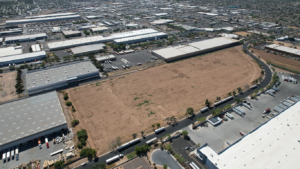As goes the high-tech industry, so goes opportunity. Once a high-tech company anchors a neighborhood, housing prices rise, new amenities spring up and unemployment dips. JLL’s latest High-Technology Office Outlook reveals where high-tech companies are looking for (and finding) reasonably priced labor and real estate, and how new and unexpected markets like suburban Phoenix are getting a piece of the action—and a second economic wind.
“Tech companies are looking for new locations for many reasons, not just for intellectual capital, or venture capital funding but other factors such as standard of living,” said Julia Georgules, co-lead of JLL’s Technology research group. “In our research, we call this ‘market dynamism.’ We have looked at different lifestyle factors for each of the 34 tech hubs, including proximity to transport and walkable amenities.”
JLL’s report, which helps high-tech companies make informed expansion decisions and provides insight for investors, features the top 34 high-tech markets across the country, including Phoenix.*
Follow the Hipsters
While the high-tech industry’s growth is driving employers to find new locations for both talent and real estate, traditional high-tech cities are not exactly struggling. Long-standing hubs continue to function as the industry’s economic engines; in fact, seven traditionally high-tech-centric markets represent more than a fifth (21.7 percent) of the 65.4 million square feet of office space under construction across the country. Still, looking beyond the top tier locations is when the economic story gets interesting.
As rents escalate and space becomes scarce in mainstay markets like San Francisco, Silicon Valley and Manhattan, the lure of more affordable prices have high-tech companies seeking talent and real estate elsewhere. The savings potential is huge: downtown Palo Alto, considered the heart of Silicon Valley, has seen such high demand that the office market is just 3.6 percent vacant with average asking rents at $86 per square foot compared to the national average of $30. In comparison, the average asking rent for high-tech office space in Phoenix is $21.11 per square foot. Twenty six percent of the total supply is available, and 2.3 million new square feet is under construction.
“High-tech’s growth is not exclusive to traditional high-tech markets anymore,” said Cara Trani, co-lead of JLL’s Technology brokerage group. “High-tech clusters have become much more common as high-tech innovations form the backbone of new product development in all industries.”
“The race is on among cities vying to become ‘the next Silicon Valley.’ As a result, more incentives and tax credits become available to lure high-tech companies into markets that are in need of jobs and economic growth,” she concluded.
The New Tech Frontiers
Along with emerging high-tech centers like Detroit, Charlotte, and Indianapolis, Phoenix, and particularly its Southeast Valley suburbs, are holding their own.
“Phoenix is definitely an emerging high-tech market,” said Andrew Medley, Vice President, Tenant Relations in the Phoenix office of JLL. “The most interesting part of this growth may be the building locations themselves—a huge percentage are in suburban markets like Chandler, Tempe and South Scottsdale. These are places that are known for young, educated families and quality of life. When Apple moved here, they did not go into the core. They went to Mesa and introduced hundreds upon hundreds of new jobs. The same can be said for many other companies… Intel, Honeywell, GoDaddy, InfusionSoft. The list goes on and on.”
According to the annual report, high-tech companies are also taking advantage of Phoenix’s local business incentives that make Phoenix an affordable alternative to other markets. The report also nods to employment generators like Arizona State University, University of Arizona and other respected local colleges.
“Phoenix’s current high-tech employment concentration is dominated by jobs in computer and electronic products,” said Medley. “This makes up about half of our local high-tech jobs. Another third is in computer systems design and services.”
“When start-ups and established high-tech companies look to expand, understanding the dynamics of local markets and innovation clusters is essential,” said Greg Matter, co-lead of JLL’s Technology brokerage group. “While it’s common for companies to look at just one factor, such as high-tech employment, when considering new market expansions, JLL’s index shows the decision should have greater depth. Each city has its own unique qualities that should be aligned with a company’s growth objectives. Companies should look at each location’s talent pool, for example, and ask, how are investment conditions? Do we need space to expand? What are the amenities and lifestyle factors for employees?”
About the High-Technology Office Outlook Report
The 2014 High-Tech Outlook helps technology companies make informed expansion decisions and provides insight for investors looking to find the next high-tech hot spot. This year’s report digs deeper into what makes a market “cool” or “liveable” with a new metric included in the index: Market Dynamism. While traditional metrics such as employment, wage growth, intellectual capital, and venture funding are essential to tracking the momentum of a high-tech market, JLL studied the various amenities in the 34 markets in this year’s report to better understand what makes a market tick.



